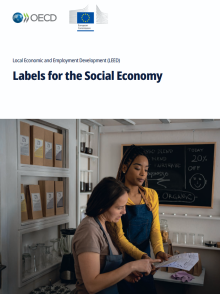Labels for the Social Economy
About this resource
Social economy entities employ 11.5 million people in the EU across sectors such as health and social services, trade, energy, housing, tourism, and recycling. Yet many organisations face challenges due to limited recognition and identification systems.
This new guide maps a wide range of public and private labels specific to the social economy and provides a practical checklist for designing, implementing, and evaluating effective labelling initiatives. By enhancing visibility and awareness among governments, consumers, firms, and investors, labels can help social economy organisations access funding, tax measures, and new markets, boosting their impact without creating additional barriers.
Table of contents
1. Introduction
- What is the social economy and why is it important?
- What do labels refer to?
- Why are labels important for the social economy?
- What is the aim and approach of this guide?
2. Mapping labels for the social economy
- Specific labels for the social economy
- Broader impact labels
- Financial labels
- Implicit labels
- Labels across borders
- Annex – Reviewed organisational impact labels
3. Policy guidance on labels for the social economy
- Design considerations
- Implementation strategies
- Evaluation approaches
